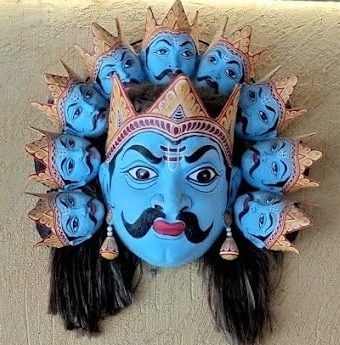SIGN UP FOR NEWSLETTER
Be the First to Know. Sign up to newsletter today

The origin of Mukha ( Face Mask), goes back to Majuli, the Assamese repository of Vaishnav cultural heritage. Majuli ,is a river island on the Brahmaputra village in Assam. It is the largest inland river island. The Ahom king is said to have built a rampart in this island.Majuli has been a cultural hub in Assam
What makes them enigmatic is the use of aesthetics and colours aside from the magnitude of their size.
Characters such as Ravana, Bali, and Jatayu are depicted through this art form. They are used for drams, dance, folk theater &religious ceremonies in temples.Further, It takes around 10-15 days to make these masks from materials like bamboo, clay, cloth and vegetable dyes.
Available at Delhi:- Assam, Janpath street shopping
Firstly,Sri Shankardeva, the great Vaishnava saint, is the primary name behind the culture of face masks. Majuli has been a cultural hub in Assa. In the 15-16th century, he conceived the Ankiya Naat plays which were deeply embedded in the Bhakti movement. These plays depicted Lord Vishnu along with his different incarnations, especially Rama and Krishna, through a great blend of musical narrative, dance, dialogue and mask-making. The Bordhuvan village in Nangaon village is identified as the birthplace of the face masks.
Finally,Mukha played a crucial role in the way it helped to portray the characters on stage . It made the entire play look so delightful and spectacular.
Nowadays, Kamalabari and Chamuguri Satras in Majuli are involved in the making of this creative art form. Chamaguri Satra is popular for making exquisite masks for religious purposes.
The effect of commercialisation can be seen in this sphere too. Not just Majuli, but individual craftsmen today are engaged in making mukhas. This craft exhibits a connection to the past & continuity of traditions & mythology. They contribute significantly to the economic prosperity of the local communities.
Be the First to Know. Sign up to newsletter today
180 views